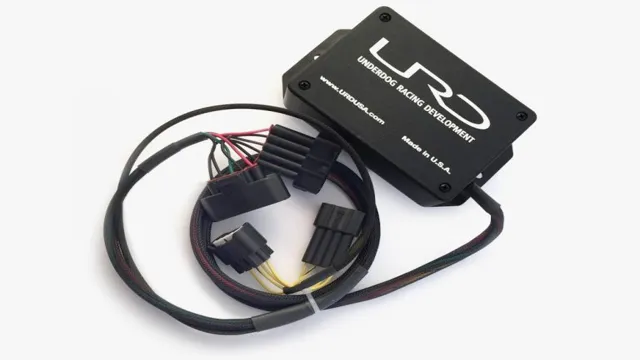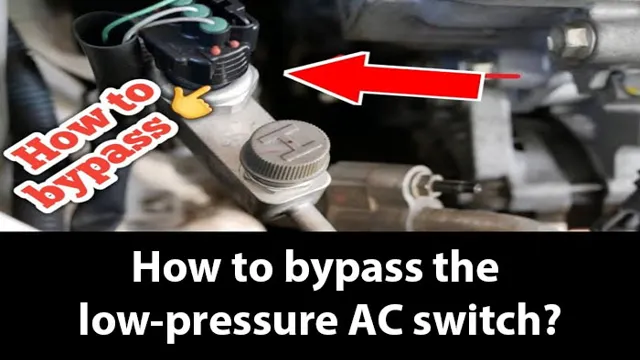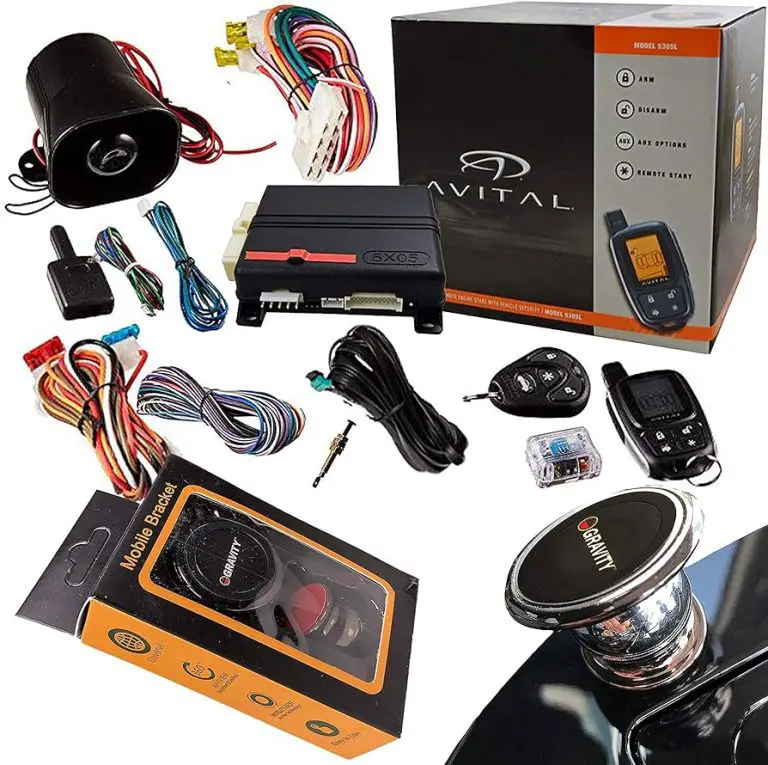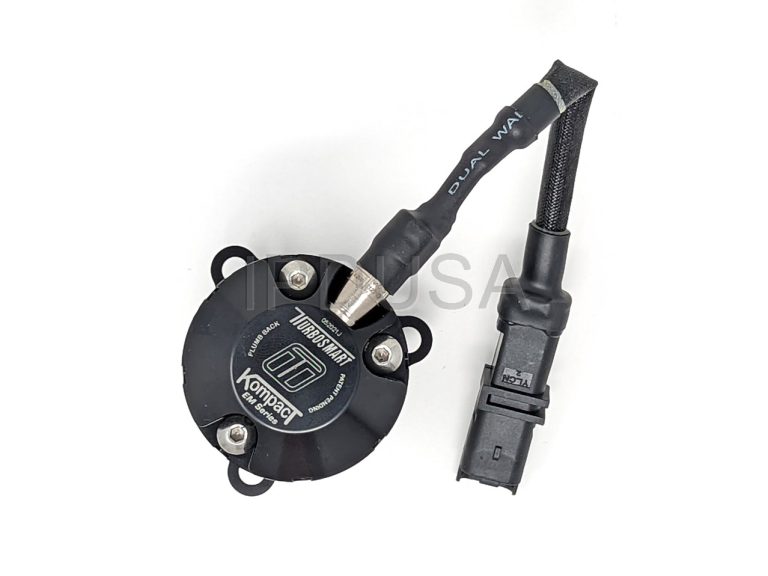Ultimate Guide on How to Calibrate MAF Sensor: Tips and Techniques for Improved Engine Performance
Have you ever experienced poor performance from your vehicle’s engine? It could be due to a faulty Mass Airflow (MAF) Sensor. A MAF sensor measures the amount of air flowing into your car’s engine, allowing the engine control unit (ECU) to control fuel injection for optimal performance. However, over time, the sensor may become contaminated or damaged, causing skewed readings and poor engine performance.
In this blog, we’ll guide you on how to calibrate your MAF sensor, ensuring accurate readings and optimal engine performance. Think of it as tuning your car’s engine to ensure it’s firing on all cylinders. So, buckle up, and let’s dive into the world of MAF sensor calibration.
Understanding MAF Sensor Calibration
Calibrating your MAF (Mass Air Flow) sensor is an essential process for your vehicle’s engine to function properly. To start with, you will need to find the MAF sensor that is usually located between the air filter and the engine’s throttle body. Once you have found it, disconnect the sensor’s harness and use a cleaning solution to clean the sensor, ensuring there is no dirt or debris on it.
After cleaning, let the sensor dry completely before reconnecting the harness. Next, you need to reset the ECU by disconnecting the battery for about 15 minutes or using an OBD scanner. Once you’ve reset the ECU, start your vehicle and let it run at idle for 10-15 minutes to allow the ECU to re-learn the MAF sensor’s parameters.
If you’re still experiencing issues with your engine, you may need to perform the process again or take your vehicle to a professional mechanic for further diagnosis and repair. Properly calibrating your MAF sensor can help enhance your vehicle’s performance and improve engine efficiency, resulting in a smooth drive and better fuel economy.
Role of MAF Sensor in Fuel System
The MAF sensor plays a crucial role in determining the amount of air that flows into the engine of a vehicle, which in turn affects the fuel system. As the air flows through the MAF sensor, it sends a signal to the engine control module (ECM) to adjust the amount of fuel that needs to be injected into the engine. However, proper calibration of the MAF sensor is essential to ensure that the ECM receives accurate information regarding the air intake.
Incorrect calibration can lead to inaccurate fuel injection, affecting the engine’s performance and fuel economy. Therefore, regular calibration of the MAF sensor is necessary to maintain optimal engine performance and ensure fuel efficiency. By understanding MAF sensor calibration, you can keep your vehicle running smoothly and avoid potential breakdowns.

Factors Affecting MAF Sensor Calibration
MAF Sensor Calibration If you own a car, you probably know that a Mass Airflow (MAF) sensor is necessary for monitoring the amount of air flowing into the engine. But did you know that MAF sensors need to be calibrated regularly to work correctly? Failure to regulate and calibrate this component is one of the most common causes of engine issues. The reason for this is that MAF calibration ensures that the sensor readings accurately reflect the actual airflow rate.
The factors that affect MAF sensor calibration can include the age of your vehicle, contamination, and regular maintenance efforts. An old vehicle with an original MAF sensor might have more fluctuations in readings than a newer vehicle. Contamination from dirt, dust, and debris can also cause imbalances in MAF readings, leading to incorrect fuel-to-air ratios.
Lastly, regular maintenance efforts such as cleaning and inspections can prevent MAF calibration from drifting too far from its intended range. So, if you want to ensure that your car is running smoothly, make sure to keep up with MAF sensor calibrations.
Calibrating MAF Sensor
Calibrating a MAF sensor is an essential part of maintaining your car’s performance. If your MAF sensor is not calibrated correctly, your car may experience issues such as stalling. Calibrating the MAF sensor involves cleaning the sensor and reprogramming the ECU to recognize the new readings.
To begin the process, first locate the MAF sensor. It’s generally found between the air filter and the throttle body. Then, remove the MAF sensor from the air intake duct and clean it with a specialized MAF sensor cleaner.
Once cleaned, reinsert the sensor and reset the ECU. This process can be done at home with the proper tools and knowledge, but if you’re not confident in your abilities, it’s best to leave it to a professional mechanic. Properly calibrated MAF sensors will improve your car’s fuel efficiency and performance, making it a worthwhile investment.
Gathering Necessary Tools and Equipment
Calibrating your MAF sensor is an important step in ensuring that your vehicle operates efficiently. To begin, you’ll need to gather the necessary tools and equipment, including a scanning tool, a specialized cleaner, and a torque wrench. Once you have these items, locate your MAF sensor, which is typically found between the air filter box and the throttle body.
Remove the MAF sensor, taking care not to damage any delicate wires. Use the specialized cleaner to remove any dirt or debris from the sensor and let it dry completely. Next, use the scanning tool to reset any error codes and reset the adaptations for the MAF sensor.
Finally, use the torque wrench to properly tighten the sensor back into place. Calibrating your MAF sensor may seem daunting, but with the right tools and equipment, it can be a simple and effective process that will help your vehicle run smoothly.
Locating MAF Sensor
Calibrating the MAF (Mass Air Flow) sensor is an important step in maintaining the optimal performance of your vehicle’s engine. The MAF sensor is usually located between the air filter and the throttle body, where it measures the amount of air that enters the engine. To calibrate the sensor, you will need a voltmeter, a screwdriver, and a clean rag.
First, locate the MAF sensor and unplug it from the engine. Then, turn on the ignition but do not start the engine. Use the voltmeter to check the voltage between the positive and ground terminals of the sensor.
Adjust the reading to 0.5V by using a screwdriver to turn the calibration screw. Once the voltage reads 0.
5V, plug the sensor back in and start the engine. Check the voltage again while the engine is idling, and adjust it if necessary. Calibrating the MAF sensor will improve your vehicle’s performance and fuel efficiency, and prolong the life of your engine.
Removing MAF Sensor
Calibrating your MAF sensor is an important task that can help to optimize your engine’s performance. Removing the MAF sensor may seem daunting, but it’s actually a quite simple process. The first step is to disconnect the electrical harness and remove any mounting hardware.
Then, carefully remove the sensor from its housing. Once you have the sensor out, you can begin the calibration process. This involves cleaning the sensor using a special MAF cleaner and then reassembling it following the manufacturer’s instructions.
It’s also important to make sure that the sensor is properly aligned and sealed after reassembly. By taking the time to calibrate your MAF sensor, you can improve your engine’s fuel economy, emissions, and overall performance. So, don’t be afraid to take on this task and enjoy a smoother ride!
Cleaning MAF Sensor
If you’re experiencing issues with your car’s performance, one of the culprits could be a dirty or faulty MAF (Mass Air Flow) sensor. This sensor measures the amount of air entering the engine and adjusts the fuel injection accordingly. Over time, it can become contaminated with debris and dirt that disrupt its ability to accurately measure airflow.
Cleaning the MAF sensor is a necessary step in restoring your car’s performance, but it’s important to calibrate it properly afterward to ensure accurate readings. Calibration involves resetting the sensor’s learned values back to default, forcing it to relearn the ideal airflow parameters. This can be done through an OBDII scanner or by disconnecting the battery for a few minutes.
By properly cleaning and calibrating your MAF sensor, you can keep your car running smoothly and improve its overall performance.
Reinstalling MAF Sensor
When replacing or cleaning your vehicle’s mass air flow (MAF) sensor, it’s crucial to recalibrate it to ensure it’s accurately measuring the amount of air entering the engine. Calibration involves resetting the sensor’s memory to zero, allowing it to relearn airflow patterns as you drive. To do this, start by disconnecting the negative battery cable to reset the car’s computer.
Then, reinstall the MAF sensor following manufacturer instructions and start the engine. Let the car idle for at least 10 minutes without touching the accelerator to allow the sensor to recalibrate. This way, you can ensure accurate fuel injection and improve vehicle performance.
Remember, a properly calibrated MAF sensor is vital for fuel efficiency and low emissions, making it an essential component of your car’s engine.
Resetting MAF Sensor Calibration
If your car is experiencing issues with the Mass Air Flow (MAF) Sensor, it may need to be recalibrated to ensure optimal performance. The MAF Sensor is a crucial component in your car’s engine, measuring the amount of air coming into the engine to ensure that the right amount of fuel is entering the combustion chamber. If the sensor is not calibrated correctly, it can cause problems with your car’s acceleration, power, and overall performance.
To reset the MAF sensor calibration, you will need to disconnect the negative battery cable and then remove the MAF sensor from the intake tube. Once removed, you can spray the sensor with special MAF cleaner to remove any dirt or debris that may have accumulated over time. Once cleaned, you can then install the sensor back onto the intake tube and reconnect the negative battery cable.
It’s important to note that resetting the MAF sensor calibration is not a permanent fix, and it may need to be recalibrated periodically. If you’re experiencing ongoing issues with your car’s performance, it’s best to take it to a professional mechanic who can correctly diagnose and resolve the problem. Additionally, it’s essential to ensure that the MAF sensor is installed correctly and that the intake tube is free of any leaks or cracks, as these can also cause issues with the MAF sensor’s performance.
In conclusion, recalibrating the MAF sensor is an important maintenance task that should be performed if you’re experiencing issues with your car’s performance. By following the steps mentioned above, you can reset the sensor calibration and help improve your car’s acceleration, power, and overall performance. Remember to take your car to a professional mechanic if you’re experiencing ongoing issues, and always ensure that your MAF sensor is installed correctly and that there are no leaks or cracks in the intake tube.
Testing and Verifying Calibration
Calibrating a MAF sensor is important to ensure that it measures the correct amount of airflow into the engine, which affects its performance and fuel efficiency. To start with, you need to clean the MAF sensor, disconnect the battery, and remove the sensor from the intake. Then, you need to verify that the sensor is not damaged or faulty.
After that, you can use a voltmeter to test the voltage output of the MAF sensor and compare it to the expected voltage range. You can also use a scan tool to analyze the MAF sensor data and check for any error codes or discrepancies. If the readings are outside the expected range, you may need to adjust the sensor or replace it.
It’s crucial to test and verify the calibration of your MAF sensor regularly, especially if you’ve experienced any issues with your engine’s performance or emissions. By taking care of your MAF sensor, you can ensure that your engine runs smoothly and efficiently, saving you money and reducing your carbon footprint.
Using OBDII Scanner
An OBDII scanner is an essential tool for testing and verifying the calibration of your vehicle’s engine. It allows you to diagnose any faults in your engine’s performance, including detecting issues with the fuel system, emissions, and ignition. The scanner plugs into your car’s OBDII port and reads the engine codes, which are then displayed on a screen.
By using this tool, you can troubleshoot any problems related to your engine’s performance quickly and easily. Furthermore, it allows you to reset the check engine light if it’s illuminated, which is beneficial when you’ve resolved the issue. In general, an OBDII scanner is both useful and efficient, as it saves time and money on diagnostics and repairs.
Verifying MAF Sensor Readings
If you’re experiencing problems with your vehicle’s performance, particularly with the engine, then your MAF (Mass Airflow) sensor may be the issue. Conducting a proper test and verification of its calibration is key to identifying the root cause of your car problems. The MAF sensor performs a critical function in measuring the amount of air that enters the engine, allowing the ECU (Electronic Control Unit) to adjust the fuel injection accordingly.
A misreading by the MAF sensor can significantly impact your engine’s performance, leading to reduced power and fuel efficiency, increased emissions, and even engine failure. To verify the accuracy of your MAF sensor readings, you can use specialized testing equipment to ensure that the MAF sensor is properly calibrated. If you detect any discrepancies, you may need to replace the MAF sensor or recalibrate it to optimize engine performance.
Regular maintenance and calibration checks can ensure that your engine performs optimally, avoiding costly repairs in the long run. So, if you want to enjoy a smooth and efficient drive, it’s essential to test and verify your MAF sensor’s calibration regularly.
Conclusion
Calibrating a MAF sensor is like giving your car a clear view of the world – it’s all about helping your engine see and understand the air it’s breathing. By following these simple calibration steps, you can ensure that your MAF sensor is providing accurate data to your engine’s computer, which in turn helps optimize performance and fuel economy. So don’t let a faulty MAF sensor cloud your car’s vision – take the time to calibrate and keep your ride running like a well-oiled machine.
“
FAQs
What is the purpose of calibrating a MAF sensor?
The purpose of calibrating a MAF sensor is to ensure accurate readings of the amount of air flowing into the engine, which is crucial for fuel efficiency and overall performance.
Can a faulty MAF sensor cause engine performance issues?
Yes, a faulty MAF sensor can cause engine performance issues such as rough idle, decreased acceleration, and even stalling.
How often should a MAF sensor be calibrated?
The recommended frequency for calibrating a MAF sensor varies depending on the make and model of the vehicle, but it is generally recommended to calibrate every 50,000 miles.
What are the signs of a MAF sensor that needs calibration?
Signs of a MAF sensor that needs calibration include decreased fuel efficiency, rough idle, decreased acceleration, and stalling. It is important to note that these symptoms can also be caused by other factors, so a thorough diagnosis is recommended.






